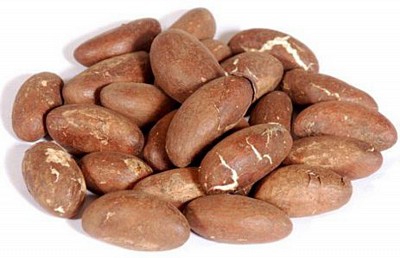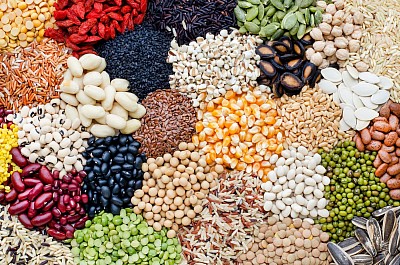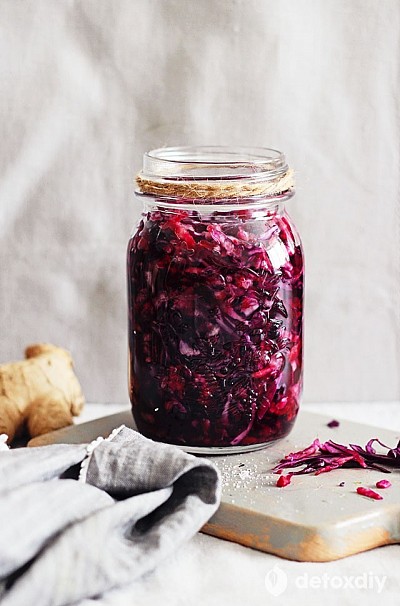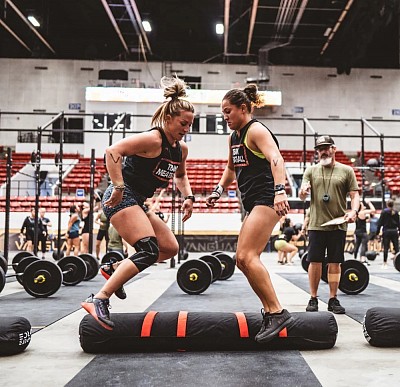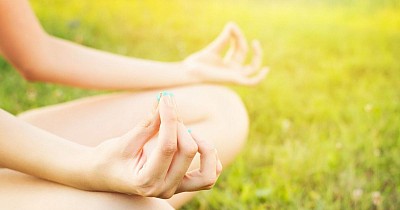HEALTH TIPS
Traditional Health Benefits of Bitter Kola
Bitter kola, also known as Garcinia kola, is a widely grown plant in Central and Western Africa. It has a long history of use in traditional African medicine and is believed to offer numerous health benefits. Bitter kola contains various nutrients, including carbohydrates, lipids, proteins, vitamin C, calcium, potassium, iron, and caffeine. In this article, we will explore ten remarkable benefits of bitter kola that you may not be aware of. From its potential antimalarial properties to its effects on weight management, blood glucose regulation, and respiratory health, bitter kola has gained recognition for its potential therapeutic value.
Antimalarial Properties
Bitter kola is believed to possess chemical compounds that act as antimalarial agents. One of these compounds, called kolaViron, is a natural antioxidant and anti-inflammatory phytochemical that has been found to have antimalarial effects. Research suggests that bitter kola extracts containing kolaviron can inhibit the growth of malaria parasites and reduce the severity of malaria symptoms. While bitter kola cannot replace conventional antimalarial medications, it may serve as a supportive therapy or a preventive measure in areas where malaria is prevalent.
Weight Management and Hunger Suppression
Bitter kola is known for its ability to suppress hunger and promote weight management. It acts as a natural appetite suppressant, making you feel fuller for longer periods. By reducing hunger cravings, bitter kola can help control calorie intake and support weight loss efforts. Additionally, bitter kola acts as a powerful thirst stimulant, encouraging increased water consumption. Staying hydrated is essential for overall health and can aid in weight loss by promoting proper digestion, metabolism, and toxin elimination. Remember to incorporate bitter kola into a balanced diet and exercise routine for optimal results.
Blood Glucose Regulation
Research suggests that bitter kola seeds have the potential to regulate blood glucose levels, making them a possible adjunct therapy for diabetes mellitus. The active compounds in bitter kola may enhance insulin sensitivity and promote glucose uptake by cells, leading to better blood sugar control. While bitter kola should not replace prescribed diabetes medications, it may offer additional support in managing blood glucose levels.
Relief from Cold and Fever
In traditional medicine, bitter kola has been used as a remedy for cold and fever symptoms. It contains bioactive compounds that can help alleviate respiratory congestion and provide relief from chest colds. Bitter kola works by enlarging the alveolar sac and duct, allowing for improved airflow and mucus clearance in the respiratory system. It may also possess antimicrobial properties that help combat the underlying causes of respiratory infections.
Aphrodisiac Properties
Bitter kola has long been regarded as an aphrodisiac, particularly for men. Research suggests that it contains compounds that can enhance sexual desire and address erectile dysfunction. Bitter kola may promote increased blood flow to the genital area, which can contribute to improved sexual performance. It is important to note that individual experiences may vary, and more research is needed to fully understand the mechanisms behind bitter kola’s aphrodisiac effects.
Immune System Support
Bitter kola has been shown to have positive effects on the immune system. It contains bioactive compounds that can modulate immune responses and help the body adapt to stress. By supporting immune function, bitter kola may enhance the body’s ability to defend against infections and diseases. It is important to maintain a healthy lifestyle that includes a balanced diet, regular exercise, adequate sleep, and stress management for optimal immune system function.
Glaucoma Prevention
Glaucoma is a group of eye diseases characterized by increased pressure within the eye, which can lead to vision loss if left untreated. Studies have found that using an eye drop made from a garcinia kola extract can help treat and prevent glaucoma. The active compounds in bitter kola may help reduce intraocular pressure and provide relief from glaucoma symptoms.
Osteoarthritis Relief
Bitter kola has been recognized for its potential benefits in alleviating symptoms of osteoarthritis. Research suggests that bitter kola contains compounds with analgesic and anti-inflammatory properties, which can help reduce pain and inflammation in individuals with knee osteoarthritis. These compounds may also improve joint health and mobility.
Lung Health Promotion
Bitter kola contains saponin, an antioxidant that has cleansing and purifying properties. These properties can contribute to improved lung health by widening the alveolar ducts and sacs, strengthening the lung tissue’s fibers, and help respiratory function.
Benefits for Pregnant Women
Contrary to popular belief, bitter kola has been found to provide potential benefits for pregnant women. It is believed to aid in the prevention of nausea and vomiting during pregnancy. Additionally, bitter kola may help strengthen the uterus, provide essential nutrients for the expecting mother, and support healthy blood circulation.
In Summary
Bitter (Garcinia) kola, with its wide range of potential health benefits, has been valued in traditional African medicine for centuries. From its antimalarial properties to its effects on weight management, blood glucose regulation, and respiratory health, bitter kola offers a diverse array of potential therapeutic applications. However, it is important to note that further research is needed to fully understand and validate these benefits. If you are considering incorporating bitter kola into your health regimen, it is advisable to consult with a healthcare professional for guidance and to ensure it complements your overall health and treatment plan.
Source Your Agric Products with Dr Ifá Imonah Solution Center
Dr Ifá Imonah Solution Center is a trusted global order fulfillment and sourcing solution company with deep expertise in the Agric industry. Our end-to-end supply chain solution makes the export of quality agric products easy, quick, and safe. Whichever region of the world you are in, be it Europe, Asia, USA, Canada, Other North/Central American countries, Africa, South America, or Oceania, you can reliably order your agric products and we will ensure it is successfully delivered to you.
How ancient grains help build immunity
The food we eat plays a leading role in immune health, and whole grains do their part by maintaining the health of our digestion system and reducing inflammation.
Ancient grains like quinoa, buckwheat, barley, spelt, bulgur, amaranth, chia, couscous, all kinds of millets and oats, are filled with fibre.
Diets high in fibre reduce the C-reactive protein (CRP) levels, a known marker for inflammation, up to 40%.
Oats and whole grain barley contain a fibre called beta glucan which helps boost immune health and reduce inflammation.
Oats also contain compounds called polyphenols which have strong antioxidant and anti-inflammatory properties, that reduce the effects of chronic inflammation.
Whole grains improve digestive health, lower cholesterol, reduce your risk of heart disease and stabilize blood sugar levels to help maintain your energy levels.
If you are bored of simply relying on brown rice and whole wheat, try experimenting with some of these super grains. Use them in soup, stew, porridge and add to hearty vegetable salads.
Immune boosting probiotic: Beetroot & red cabbage
Your gut bacteria directly impact immune function.
Fermented foods offer double the gut benefits; they contain probiotics, enriching your gut with more beneficial bacteria, and they act as prebiotics that feed that bacteria and help it flourish.
Research suggests that the good bugs found in fermented foods like yogurt, kefir, kimchi, sauerkraut and tempeh can help fight viral diseases like the flu and bolster your defenses against future infections.
Fermented foods include sauerkraut, apple cider vinegar, miso, kimchi, kombucha and kefir. Making lacto-fermented vegetables at home is super cheap and easy to do.
This beautifully colored twist on traditional sauerkraut is another way to get a nutrient and probiotic-rich serving of raw vegetables into your diet.
It is delicious with salads, on oatcakes, or wholegrain bread.
Ingredient
🍀s½ medium red cabbage head, finely diced
🍀1 medium beetroot, peeled and grated
🍀2-inch ginger piece, peeled and grated
🍀1 tsp sea salt
Add all ingredients in a large bowl and use your hands for massaging the mixture for two or three minutes, until the vegetables juices start to release and collect into the bowl bottom (you may want to use gloves for this to avoid pink hands).
Layer the mixture into a clean glass jar and press well. If the juices don’t cover the mixture, you can add more salted water (approx. 1 tsp sea salt for 1 cup of water).
Cover with a lid and leave at room temperature for up to one week. Check the taste after 5 days, if not sour enough leave for longer.
Store in the fridge.
Social fitness groups
Social fitness groups, whether virtual or traditional, are fun ways to stay healthy and fit, to connect with and motivate each other to make healthy lifestyle choices.
There is no greater motivation for fitness than working out in a group. Surely, many people would agree with this statement. There can be many benefits of social exercising. When you are surrounded with people, doing the same exercises as you, it definitely increases your competitive spirit. It makes you more accountable to attend every fitness class. You don’t give up as easily as you do when you are alone.
If you are one of those people constantly seeking motivation for fitness and looking to combine your social life with your physical activity, social fitness groups are a perfect fit for you. Social fitness groups may not be an unfamiliar concept, since there has been a tremendous uplift, specifically over the past few years.
Virtual vs traditional groups- What do you prefer?
Traditional fitness groups are locally located and can meet personally to perform the group activities. You might have seen a group of elderly women walking together in a park, or a group of runners belonging to a runner’s groups practicing together.
However, these days there are no geographical limitations for any social fitness groups. There are virtual fitness platforms where the group members can meet, interact with and motivate each other. There are apps for finding and becoming a part of the fitness group, with group members tracking their own and other’s progress through various features of the app and different gadgets that can be worn on the body. Doesn’t it motivate you when you see your buddies completing their half marathon training which you might also have done had you pushed yourself a little more!
Be Spoilt for Choices
There are as many groups as there are interests! For every fitness activity you name, there is at least one group, virtual or traditional. Hiking groups, walking groups, Zumba groups, Pilates clubs, laughter groups, runners’ groups, and many more. There is even social fitness groups based on different fitness objectives. Weight loss groups, weight gain groups, half marathon groups, body-building groups are some of them. And lastly, there are groups based on genders and age, such as senior citizen groups, kids' activity groups, all-women group etc.
Here are a few social fitness groups you may consider joining:
1.Hiking is fun with a group
Going hiking in groups is a very popular fitness activity, where hiking enthusiasts decide a hiking spot and perform the activity together. The advantage of doing it in a group is the safety it offers, and the group members can share tips and tricks with each other. Hiking as a fitness activity promotes muscle-building, facilitates good circulation and strengthens the mind-body connect.
2. Learn and do Yoga asanas with a group
Yoga groups include people coming together to perform similar asanas, which are led by professional yoga instructors. Yoga involves different techniques of breathing, meditation, relaxation, stretching and physical postures.
Laughter clubs are one type of yoga groups that engage in different types of groups laughter in addition to the stretching and breathing exercises. Health benefits of yoga include helping to keep the mind and body calm, eliminating toxins, suppressing stress hormones and strengthening the body’s defense mechanism to fight off infections.
Practicing yoga in groups helps to share energy among yourself, pushes you beyond your limits and improves your overall confidence and consistency. So, practice it in a group to reap all the yoga benefits!
3. Dancercise with a Zumba group
Zumba is a form of fitness which involves different kinds of dance moves, giving a full-body workout. It is a fun, exciting, energizing form of workout for all of you who love grooving to music beats.
Zumba is majorly designed as 45–60-minute group classes led by a trained Zumba instructor. They are available at different intensities for all age groups from kids to elderly people. Zumba includes movement of every part of your body from head to toe. Zumba benefits include helping you burn calories, strengthening your body, reducing excess fat and improving your overall immunity.
This form of group exercise exposes you to an enjoyable social environment, effectively builds your stamina and encourages you to keep going till you reach your fitness goal.
4. Walk with like-minded people
Walking can become boring with time and can demotivate you; not when do with a group! Walking groups have become very common, as groups members motivate each other and keep pace with each other’s progress. These groups can be a boon for people who hate to exercise alone. Walking in groups have several health benefits including a powerful boost to immunity!
5. Socialize with Elderly fitness groups
Elderly fitness groups involve different kinds of stretching, balancing, strengthening and flexibility exercises designed for older adults. A study conducted by the University of British Columbia stated that older adults are more active and consistent with their physical exercise when they do it with people of their age*.
Exercising for seniors is important to help maintain their physical and emotional health. They usually have decreased physical activity due to their age, therefore it is important to constantly motivate them. Elderly fitness groups is one such method to encourage them.
Social fitness groups for the elderly not only provide physical fitness but also increase social interaction among these age groups. Regular interaction with people helps to decrease their chances of developing anxiety, loneliness and depression. These methods enhance their immunity and improve their overall quality of life.
Surround yourself with people who inspire you to keep going until you reach your fitness goal. A few simple changes that you make in your daily life can help you lead a longer, healthier life. So, what are you waiting for? Find your driving force, choose your social fitness group and join one today!
Meditation for Busy Minds
Mindfulness, Meditation, Mantras. We often hear these jargons in our daily lives. We read about the importance of mental health, but somehow our busy schedules don’t leave space for it. We take all necessary measures to keep our body fit and in good shape. Be it through daily runs, gymming, or even Pilates. But how often do we stop and think – what about my mind and mental health? We need to find a solution to break free of the stress in our lives and care for our minds. Investing just a couple of minutes in mindfulness meditation can do wonders for our minds and bodies. If you’re wondering how to practice, you’re at the right place. Read on to know more. about mindfulness and easy tips to practice mindfulness meditation in your daily hustle and bustle.
What is mindfulness?
You’ve heard about it. You’ve read about it. But do you know what exactly mindfulness is? Don’t worry – we’ve got you covered. In a nutshell, mindfulness is focused on awareness. It’s all about broadening your conscious awareness and taking in your surroundings. It’s living in the present moment.
Sounds simple enough, doesn’t it? That’s because it is! You can practice mindfulness meditation even during your packed schedule. All you need is – you! No candles, aromatic oils, or other paraphernalia required. Mindfulness exercises can be practiced successfully by beginners as well. We have some tips for busy minds like yours. Give them a go!
Mindfulness tips and exercises you can try:
Mindful breathing: This is a very easy exercise but can have great benefits. When you breathe in, recognize it as ‘in-breath’ and when you breathe out, recognize it as ‘out-breath’. Focus all your attention on breathing in and breathing out. At first, you might notice your mind wandering off. Don’t worry, that’s natural. Eventually, with enough focus, you’ll notice the chatter in your mind will begin to quiet down. Breathing colors: This exercise is similar to mindful breathing. Pick two different colors, one to breathe in and one to breathe We suggest using a cool color for your in-breaths, like blue, and a warm color like red for your out-breaths. However, choose the colors you want, for the reasons you want. Close your eyes and pair each color with its breath. With practice, your color awareness develops, and you will be able to visualize the colors much more strongly. Performing this exercise regularly helps to balance and enhance your body’s energies. Mindful walking: Take a walk outside or around your room or in your office parking lot. Pay attention to the sensation of your feet in contact with the ground. Let go of thoughts, emotions, and other distractions and just walk as if being mindful of every step is vitally important. Come back to focusing every time your mind wanders. Doing this will allow you to stretch your legs and relax your mind. Positive memories: Think of a positive event from your life and just go to your happy place! Play it in your mind as if it is a movie and experience all the emotions that come with the memory. Let this positive memory have an impact on you. Body scan: Take some time to scan the different parts of your body – be it your face, extremities, abdomen, etc. Note areas of discomfort, if any. Take a deep breath into each area of the body where this discomfort exists. Also, notice areas of your body that feel relaxed and comfortable. Breathe into these areas too. Notice the change you feel with each breath.
With these tips, we bet you’re well equipped to deal with stress. Remember, busy minds need to unwind. So, what are you waiting for? Start your journey to mindfulness now!
Maintain healthy air quality at home
For those of us practicing social distancing, being mostly indoors and working from home, indoor air quality is more important than ever.
Poor air quality at home can be deadly and can irritate the eyes, nose, and throat, cause shortness of breath, aggravate asthma and other respiratory conditions, and affect the heart and cardiovascular system.
Breathing polluted air for long periods of time can seriously compromise your immunity. Says a Harvard study, even a small increase in long-term exposure to air pollutants leads to a large increase in the risk of COVID-19.
Here are a few tips to improve air quality at home:
Let fresh air into every room – Disinfectants, paints, cleaning products and sanitizers produce certain Volatile Organic Compounds (VOCs).
Opening a window and ensuring good ventilation will allow the trapped gases to escape and will dilute any remaining VOCs with fresh air, which will keep your immune system in fighting shape and reduce issues of pre-existing respiratory conditions.
Stop smoking indoors – Smoking is bad for your home’s health too. Tobacco smoke can tank your air quality.
There is no safe level of tobacco smoke so you will, as a family, have to put a complete stop to it. Be firm with smoker-visitors too.
Spring clean regularly – Dust mites and molds can mix with the air in the house. This will hurt the air quality and pose potential health risks.
Regularly wiping down surfaces, dusting, vacuuming, cleaning and wet wiping the floors will prevent dust particles from building up in your home and air.
Invest in an air quality monitor – A good air quality monitor can measure air pollution in your home.
Get an air purifier – A good air purifier will help you bust air pollution in your home.
Air purifiers control air quality by getting rid of allergens, pollen, dust, pet hair and strong odors.
Do your research and look for a HEPA (High Efficiency Particulate Air) purifier with a genuine HEPA filter.
